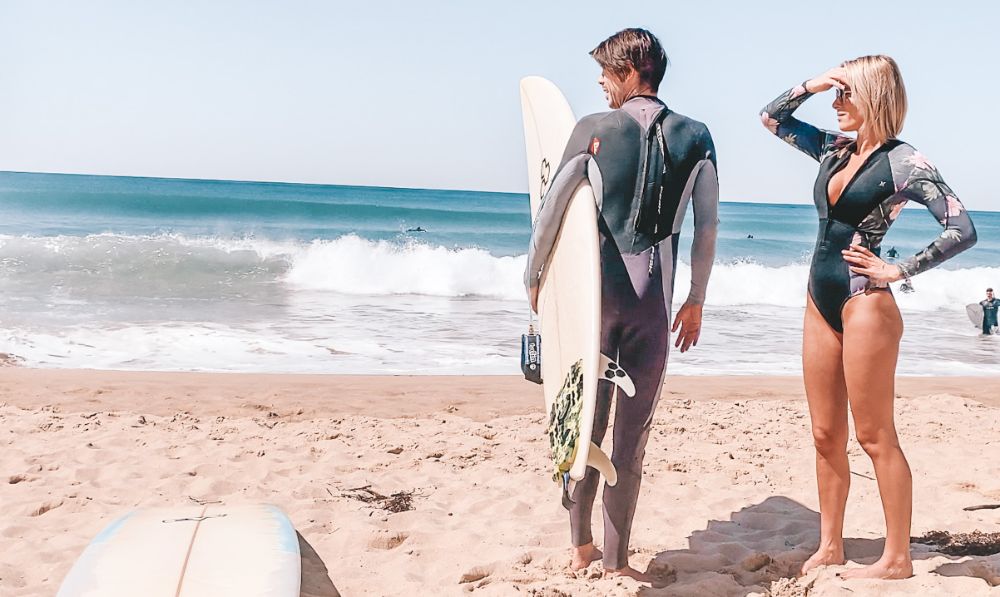Whether it's your first time buying a wetsuit or it's time for an upgrade or replacement, it can be tricky to find the right size and length wetsuit for your body, especially when you're just quickly trying it on in store or ordering online.
We are told wetsuits should feel a bit tight and they stretch in the water, but how tight should they be and how should your wetsuit fit you?
A good fitting wetsuit should feel snug all around your body but it shouldn't drastically restrict your movement, cut off any blood flow or be painfully tight around the neck, wrists or ankles. The right sized wetsuit shouldn't have any excess or loose material.
Different types of wetsuits have different ways to measure them. Keep reading to learn more about how the different wetsuits should fit your body.
Wetsuit Pricing, Thickness and Type
Wetsuits have come a really long way from the bulky and stiff suits of the 80's and 90's and most good wetsuits are extremely elastic allowing them to conform to your body better than ever before.
Price ISN'T Everything
Generally speaking, the more you pay the lighter and more stretchy the materials you'll get in your wetsuit which can lead to better fits and warmer suits.
However, remember that price isn't everything and you don't NEED to get the best suit money can buy, what you NEED is the wetsuit that fits you best.
A cheap entry level wetsuit with a back zipper (which tend to be cheaper) can sometimes be the perfect solution for you if it fits you well. That $1,000 wetsuit with all the latest technology might be made for a slightly different body shape to yours and won't be right for you.
You also want to make sure you feel good and look good in your wetsuit so yes – style and fashion should come into your decision making.
So try on multiple different suits in different price ranges.
The Thicker The Suit The More Restricting It'll Be
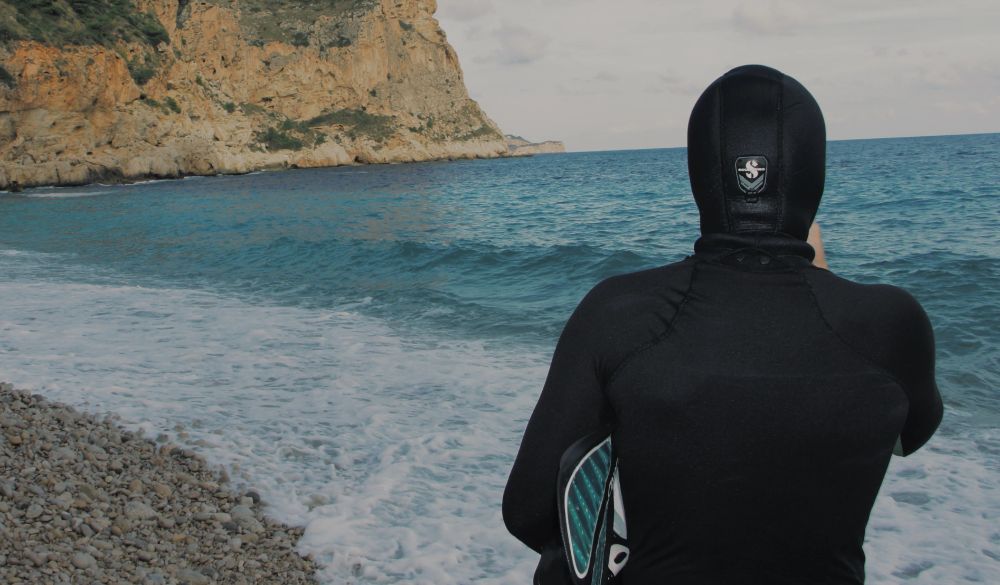
Wetsuits come in a wide variety of thickness, with a thicker wetsuit keeping you warm.
Yes you can wear things under your wetsuit to stay warm but the best way to stay warm in a wetsuit is to get the right thickness for the water temperature you'll be swimming in.
The tradeoff her is mobility. The thicker the suit the warmer you will be but the more restrictive your suit will be. You also don't want to be too hot.
Wear a 7mm wetsuit designed for icy cold temperatures in warmer water and you'll cook yourself and overheat. Wear a 1mm wetsuit while surfing in winter and your hands might go blue. You need to find the right thickness for you.
Consult a wetsuit thickness guide or talk to your local wetsuit shop and get their advice on how thick you should go.
Wetsuits will often be thicker in some places and thinner in others. Wetsuits for surfing, for example, are thicker in the body and legs and thinner in the shoulders are arm as paddling mobility is extremely important.
The Right Type Of Wetsuit
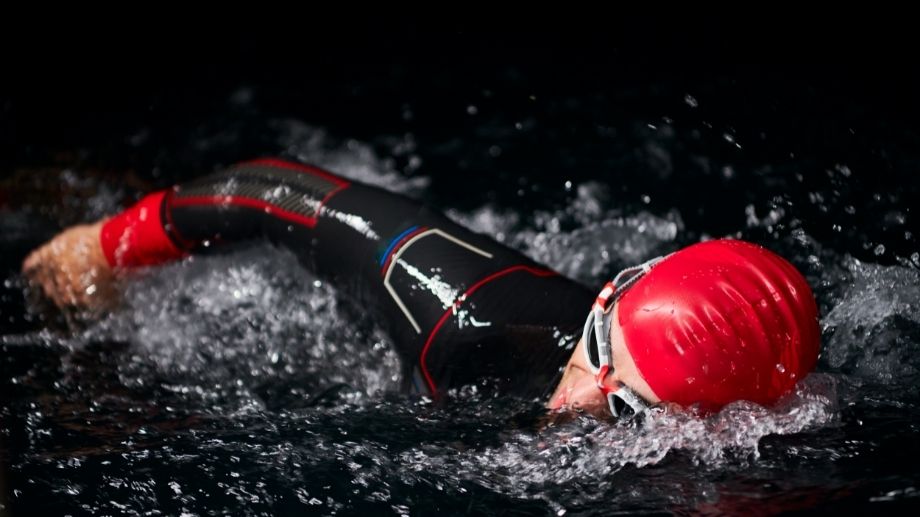
There are different wetsuits for different types of sports and you want to get the one that is specifically tailored to your sport.
Wetsuits for surfing for example will have thinner shoulders and arms to improve mobility while being thicker in the body.
For swimming and triathlon wetsuits there is a focus on hydrodynamics and stroke flexibility so athletes can be faster in the water and then freediving wetsuits are different again focusing on warmth and a hydrophobic layer to reduce friction and minimize energy loss.
So make sure when trying on wetsuits you're getting the right type of wetsuit for you.
Finding the Right Fit in a Wetsuit
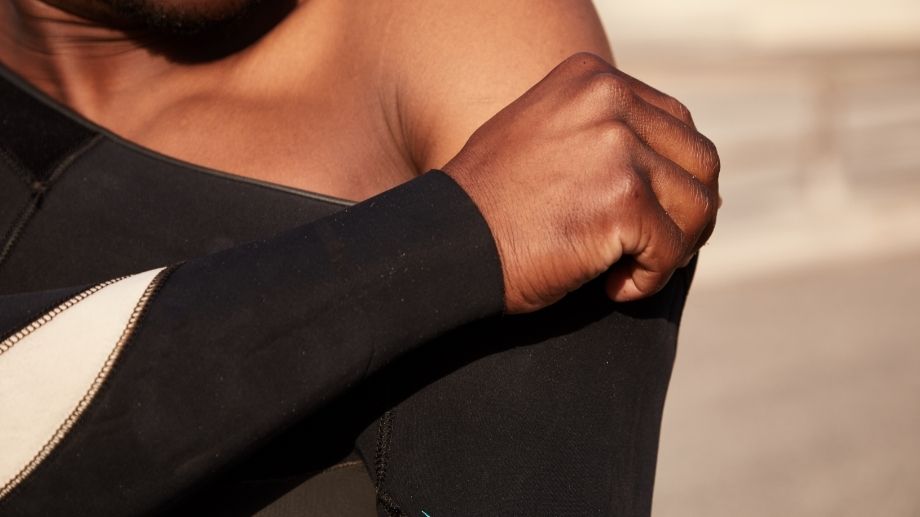
The importance of a well-fitted wetsuit can not be stated enough! If you're like me and have ever owned a wetsuit that is too big you'll know it fill with water and doesn't work properly to keep you warm. The best way to stay warm in a wetsuit is to have a wetsuit that fits you well.
A wetsuit that is too small for your body is even worse. It's almost impossible to get on, restricts movements and tends to hurt you in your private parts and causes rashes and chafing around the neck and other areas. A wetsuit is quite difficult to stretch as well, so it's really important you get the right fit to begin with.
Your wetsuit is supposed to fit your body shape like a second layer of skin. Check the following points to find a wetsuit that fits your body well.
It Should Feel Good All Over
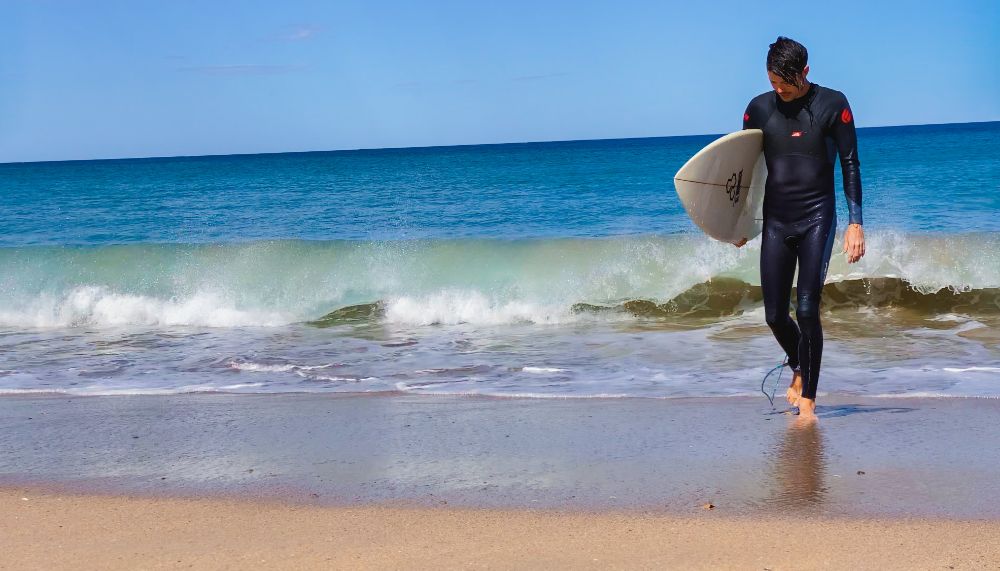
Trying on wetsuits is time and energy consuming and can be hot and uncomfortable in store, especially on hot days.
However, taking your time to ensure you find a wetsuit that fits well over your entire body is extremely important.
Don't rush it. If the wetsuit feels good in some areas and not others try different brands, different styles and even different sizes until you find one that feels great.
I was always a small and while my weight hasn't changed at my last wetsuit fitting the small just felt too restrictive. I moved up to a medium and while some brands were too big I found one medium that felt amazing in all areas. It wasn't the best or most expensive but it suited my body well and so I went with that wetsuit and I have no regrets.
Back and Waist
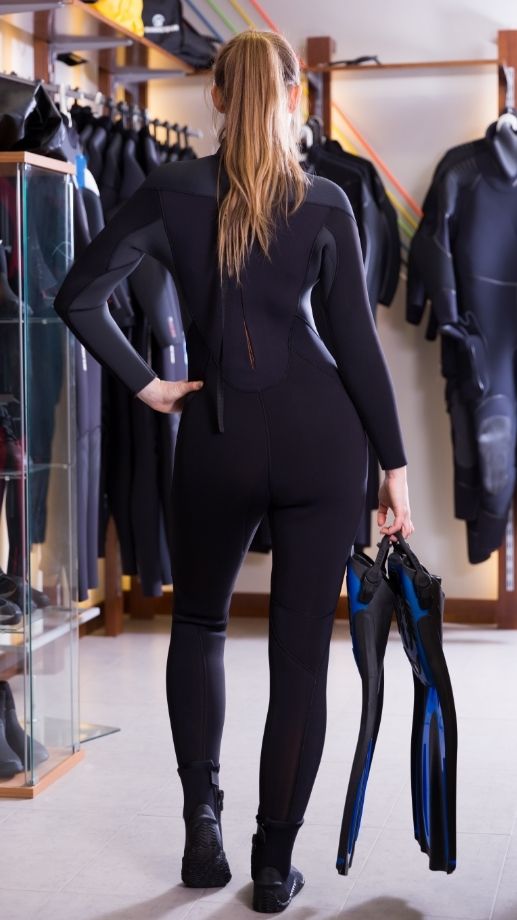
Your wetsuit should take the mold of your back and waist. Check to see if the suit pulls onto your lower back; there shouldn't be any space between you and your wetsuit.
If you happen to find a gap, try moving the wetsuit higher up by pulling the fabric up in the crotch area and lifting the neckline. Sometimes a little bit of a gap in the small of your back (especially if you're really skinny like me and have an arched back) is normal.
But if there’s too much fabric and it feels like it's loose in this area and bunching the suit may be too big or not the right fit for you. If there is excess fabric the suit might let in extra water, which can weigh you down and make you cold.
Arms and Shoulders
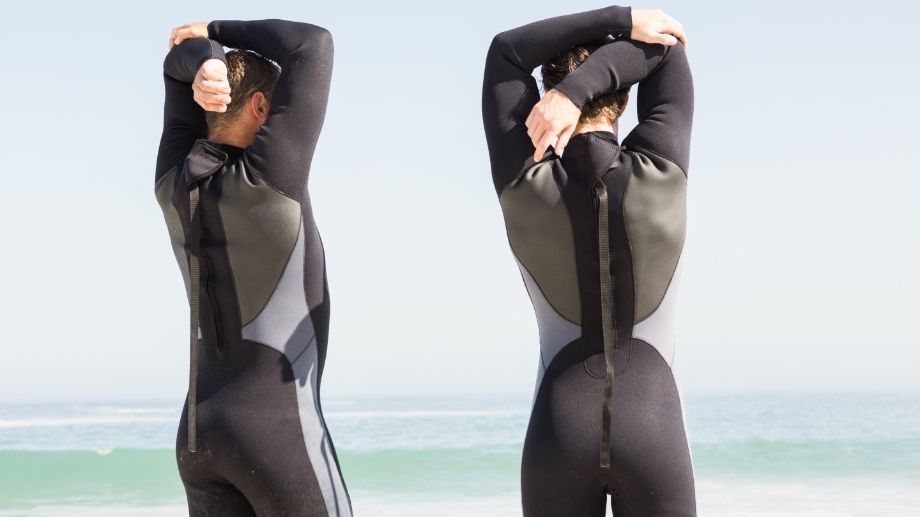
If you're a surfer then the arms and shoulders are one of the most important part of the wetsuit and you want to get this right.
A good fitting wetsuit should feel snug but it shouldn't feel excessively restricting around your arms.
Begin by trying to raise up your arms to the side all the way up above your head, then do the same but in front of you. Practice paddling or swimming motions in the wetsuit and see how your arms feel.
It's normal to have slight restriction in this area but excess restriction, where the wetsuit feels like it's pulling your arms down when you raise them above your head, could indicate that the wetsuit is too tight.
The wetsuit should fit snugly in your armpits and create little ruffles at the top of your shoulder when you lift your arms above your head.
What's really important here is that you make sure the wetsuit feels good in your underarms. Sounds strange but this is one of the primary spots for chafing on a poor fitting wetsuit and if you've ever tried to paddle or swim in a wetsuit with chaffed underarms you'll know the intense pain I speak of.
Avoid loose skin under the underarms and make sure the seams don't dig into you.
Neck and Chest

To check the sizing around your neck and chest, extend your wrists and arms in front of your chest. Look for any gaping at your neck or bulging in the chest; there should be minimum space and folds between you and your wetsuit.
If your neck feels uncomfortable, try moving some of the material up from the back of the legs and zipper up towards your shoulders.
The neck should be snug and not loose however you don't want it to feel so tight that it's digging into and marketing your skin. A neck that is too tight can be very painful with extended use and can lead to rashes.
Dry suits are slightly different as you need quite a tight neck in order to create a waterproof seal and it should feel quite tight when you're trying it on. However, wetsuits don't need to be this tight.
Groin
The groin area you want to get right. I personally find that this area tends to suck in and get tighter once I'm in the water so having the right fit will ensure there isn't too much pressure (which causes pain) when I'm in the water.
The groin area should be snug fitting, and all material should be pulled up as far as possible. Make sure the wetsuit is on properly with the legs pull up as you would wear it in the water.
There should be no loose or bulging material but it also shouldn't be so tight that it feel like you have too much pressure in your groin area.
How Wetsuit Zipper Styles Differ
You have three main choices when it comes to wetsuits with zippers:
- Back zipper
- Front/Chest Zipper
- Zipperless
Back Zipper
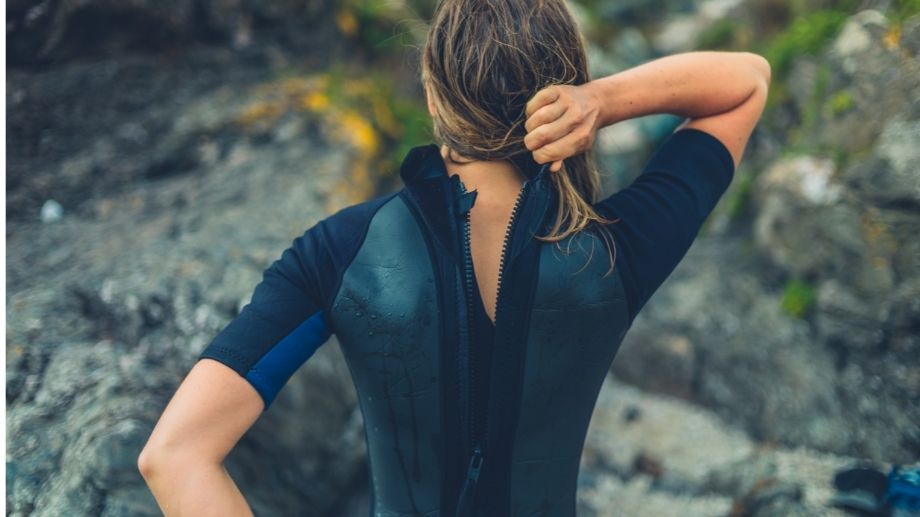
Back zippers are the oldest form of zipper and have the major benefit of making your wetsuit easy to get into and out of.
Back zipper suits tend to be the cheapest wetsuits out there but I've noticed they are slowly being phased out more and more and being replaced by chest zippers or zipperless suits. Pretty much all premium wetsuits no longer use a back zip.
The limit movement in your back, are less hydrodynamic and tend to let in more water than other variants making them colder. Still the wetsuits with back zippers these days are still very comfortable.
Front/Chest Zipper

Chest zippers were a big innovation in wetsuits. One of the limitations of back zippers is the flexibility of your suit around your back and waist is extremely limited because zippers don't stretch.
However, the chest zipper moves the inflexible part of the suit to your chest (which moves less than your back) giving you a better fit and a more flexible suit over the rest of your body.
The front zipper is less prone to failure when it comes to flushing (when water enters the wetsuit) and can result in heat loss. Front zippers tend to be harder to get on, which can be a deal-breaker for some buyers.
Pretty much all premium wetsuits these days will either have a chest zip or no zip at all.
No Zipper
Given the zipper is the least flexible part of the suit there are now wetsuits with no zipper at all.
You climb in through the neck/shoulder of the suit and then pull the suit over your head to seal it.
It's still a similar design to the chest zip wetsuit but will provide more flexibility and more warmth as it keeps out more water.
These are the hardest suits to get in and out of though so that's a consideration for some people.
Choosing A Zipper Video Guide
Read more about choosing the right zipper type for your wetsuit or watch the educational video below:
Tips For Successfully Choosing a Wetsuit Size in the Store
After decades of buying wetsuits here are some of my top tips to help you choose the right wetsuit in the store.
Don't Get Overwhelmed and Rush Things
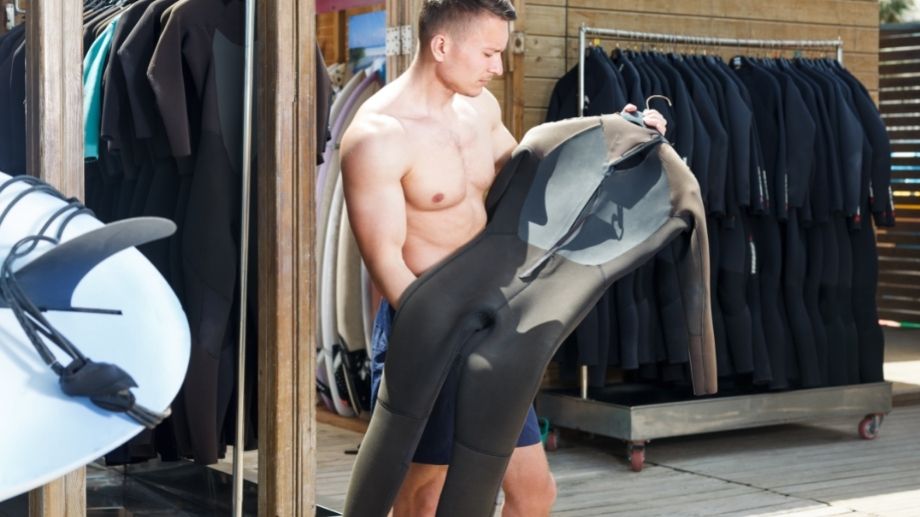
Trying on a wetsuit in store isn't the most ideal location to pick a suit.
Putting suits on and off takes time and energy and usually you'll get hot and sweaty trying on a bunch of different suits.
There is also almost an endless supply of suits to choose from it can be overwhelming and make you feel dumb not knowing what to buy.
The biggest advice I can give you is to NOT rush. Take your time.
Staff are trained to help you and are usually very patient. They'll explain the different features of each wetsuit to you, the different brands, the different lengths and thicknesses and everything. They are usually super friendly.
They are also there all day, their shift is their shift, so 99% of the time they aren't in a rush at all. So don't feel like you need to rush.
It's better to take a deep breath, take your time to find the suit that feels amazing for you rather than rush and have a wetsuit that is too big or too small and you've just wasted hundreds of dollars.
Wear Your Swimsuit To The Store
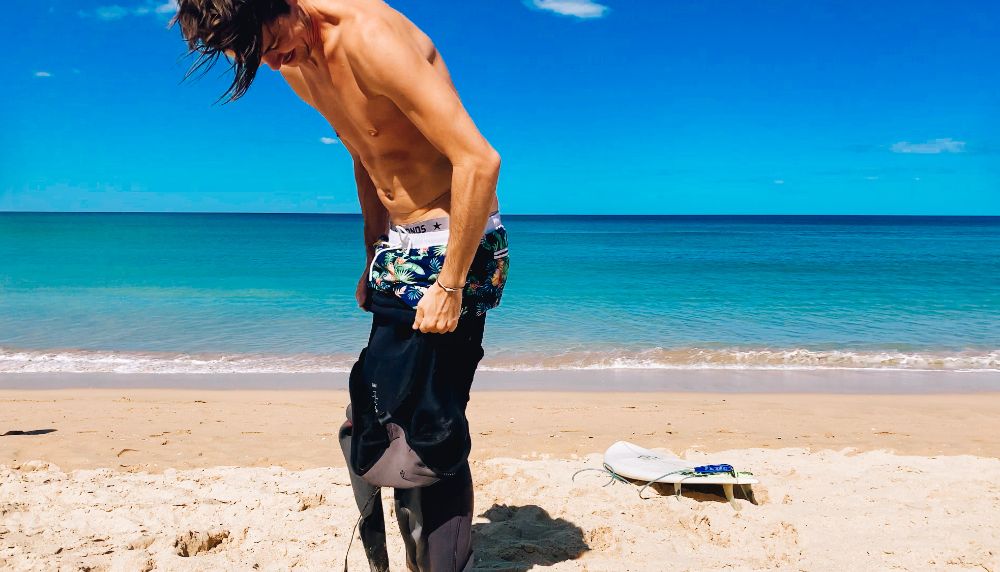
To really get a feel for you wetsuit you want to try on your wetsuit wearing exactly what you'll be wearing when you go in the water.
Usually this is going to be just a basic swimsuit or as they like to call them where I'm from…budgie smugglers. You don't want to wear board shorts under a wetsuit or even some undies can bunch up and make the wetsuit awkward to get on and really see how it fits.
You can't try on wetsuits naked for hygienic reasons so wear your swimsuit or tight fitting underpants to the store to try on your wetsuit.
Choosing a Full Wetsuit/Steamer, Springsuit, Long John/Jane or Other Type
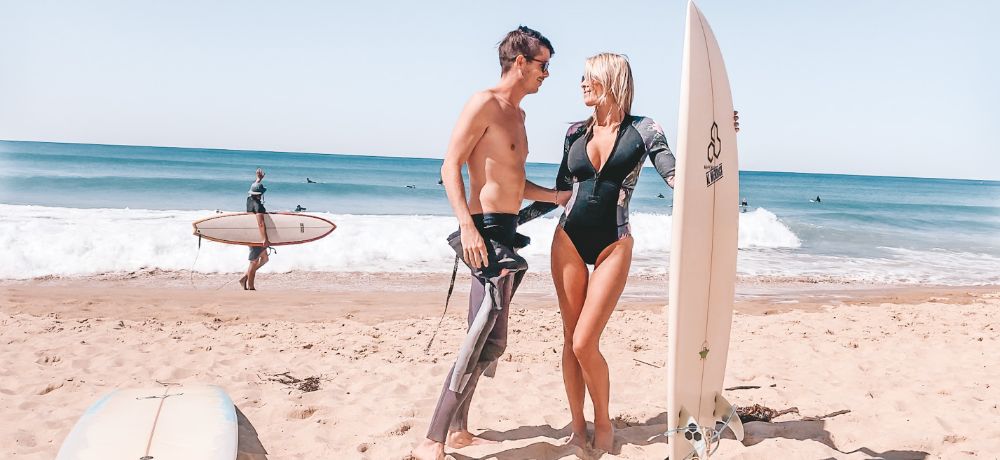
These days there are so many different wetsuit types – from rash vests with no pants at all to long/short johns to spring suits and steamers.
Different countries call them different things too but basically there are only 6 main choices to make. 3 for your upper body and 3 for your lower body.
Upper Body
For your upper body you have 3 main choices:
John/Jane (singlet style) – A wetsuit called a Long John/Long Jane or Short John/Short Jane refers to wetsuits with a singlet style top. These maximize arm and shoulder mobility as there is nothing in these areas. The long and short just refer to the pant length.
Short sleeve – Like a t-shirt these wetsuits generally cut off above the elbow. Ones with short legs that cut off above the knee are often call springsuits and ones with full length legs are often call short sleeve fullsuits.
Long sleeve – Long sleeve is when the wetsuit goes all the way to your wrists. If it's a long sleeve and long pants it's often called a steamer. if it has short legs or swimsuit style it's called a long sleeve spring suit.
Lower Body
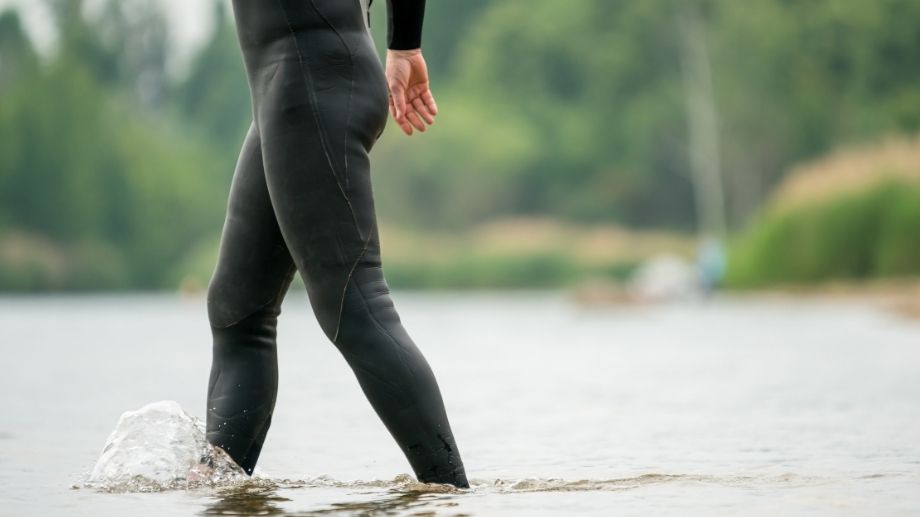
For the lower body females have 3 main choices and men have 2 main choices.
Full length – You can get full length legs that go all the way to your ankles. These are best for cold water.
Short length – These wetsuits cut off above the knee. Male wetsuits usually have longer pant length than females simply due to style.
Swimsuit style – This is where the legs aren't covered at all and the base of the wetsuit looks like a one piece swimsuit. This is usually exclusively for females and is very common for girls to wear these wetsuits when surfing.
Springsuits and full wetsuits cover the majority of your torso, hips, and legs; therefore, height and chest are the most essential measurements you can take. Start by measuring your chest at the widest point with the tape gently snug. When it comes to the length, it’s considered OK if the suit is a little on the long side.
It’ll likely feel uncomfortable in the crotch and neck area, and when you find yourself in between two sizes, it’s generally recommended to take the larger size. Your wetsuit sleeves should end at your wrist bone, and your legs should end slightly above the ankle bone.
Choosing a Boot Size
You can order wetsuit boots in your normal shoe size, and if you’re a half size, it’s recommended to round down to the nearest size. The Neoprene can stretch to half size, but remember that wetsuit boots should fit a bit tighter than regular shoes to prevent them from scooping water.
Read the guide on drying wetsuit boots fast
Choosing a Glove Size
You can easily choose your perfect glove size by simply measuring around your palm. If you find yourself between sizes, instead take the smaller size to help prevent your glove from slipping off. Slip the glove on and check for any loose material; it should literally “fit like a glove.”
Read the guide on drying wetsuit gloves fast
Conclusion
Wetsuits come in different styles and sizes. Choosing the correct wetsuit size is crucial to a good diving or surfing experience. Listed above are a few tips to apply to your next wetsuit shopping trip.
By following these tips on choosing a wetsuit size, you’ll know how to effectively try on and find the right diving suit before entering the water.

